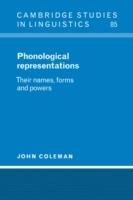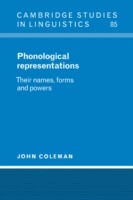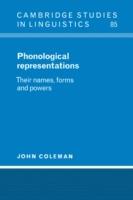Phonological Representations: Their Names, Forms and Powers
Rewriting rules, derivations and underlying representations is an enduring characteristic of generative phonology. In this book, John Coleman argues that this is unnecessary. The expressive resources of context-free Unification grammars are sufficient to characterize phonological structures and alternations. According to this view, all phonological forms and constraints are partial descriptions of surface representations. This framework, now called Declarative Phonology, is based on a detailed examination of the formalisms of feature-theory, syllable theory and the leading varieties of nonlinear phonology. Dr Coleman illustrates this with two extensive analyses of the phonological structure of words in English and Japanese. As Declarative Phonology is surface-based and highly restrictive, it is consistent with cognitive psychology and amenable to straightforward computational implementation.
-
Autore:
-
Editore:
-
Collana:Cambridge Studies in Linguistics
-
Anno:2005
-
Rilegatura:Paperback / softback
-
Pagine:364 p.
Le schede prodotto sono aggiornate in conformità al Regolamento UE 988/2023. Laddove ci fossero taluni dati non disponibili per ragioni indipendenti da Feltrinelli, vi informiamo che stiamo compiendo ogni ragionevole sforzo per inserirli. Vi invitiamo a controllare periodicamente il sito www.lafeltrinelli.it per eventuali novità e aggiornamenti.
Per le vendite di prodotti da terze parti, ciascun venditore si assume la piena e diretta responsabilità per la commercializzazione del prodotto e per la sua conformità al Regolamento UE 988/2023, nonché alle normative nazionali ed europee vigenti.
Per informazioni sulla sicurezza dei prodotti, contattare productsafety@feltrinelli.it



